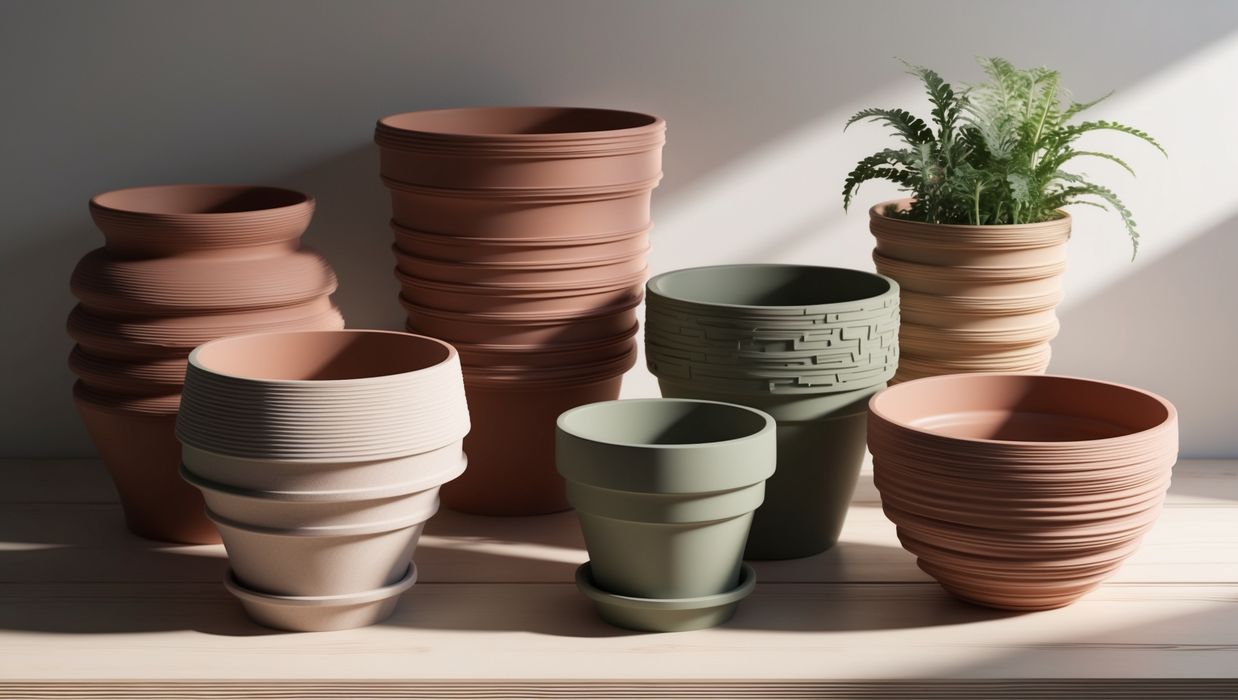
How can 3D printing help in your garden?
Gardening is one of the world’s oldest pastimes. The world’s first gardens were dug nearly 4,000 years ago in Ancient Egypt when people who lived on the Nile used their walled enclosures to grow fresh vegetables and fruit orchards.
Since then, gardens have been used as creative displays of wealth, quiet spaces for reflection, and productive plots of land that fed the world during the rationing of food crops following WWI and WWII.
Gardening has always been a highly technological activity, too. The invention of greenhouses in the 14th century made growing seasonal vegetables possible, while prune sheers developed in the 19th century made clipping bushes easier in the 14th century. Today, a new technology is breaking ground in the world of gardening: 3D printing.
Organizing Your Garden Shed
If you’re an avid green thumb, you likely have a shed filled with spades, pruners, clippers, rakes, and trowels. While each of these tools serves an important function in your garden, keeping them in order can be a little tricky. It’s easy to lose track of your hand hoes and cultivators when you’ve spent all day tilling the earth, and you may accidentally damage sheers’ secateurs if you don’t organize them currently.
You can use 3D printing to optimize your shed storage by printing projects like:
- Hooks;
- Containers;
- Shelving for storage;
- Boxes for tools with blades.
Once you’ve printed some 3D storage solutions, you can further improve your garden shed storage designs by:
- Using old wooden crates and pallets for low-waste, low-cost shelving units;
- Wrap your garden hose around a custom, 3D-printed hook that suits your needs;
- Print a pegboard that fits the dimensions of your shed;
- Design some mobility bins complete with custom wheels for easy hauling.
Don’t forget to add a little decor to your garden shed along the way. This will give you a sense of pride when you open up your shed before a day of mulching, weeding, deadheading, and planting new seeds for the spring season.
Pest Control
As long as there have been gardens, there have been pests. Pests — like slugs, aphids, ants, and small mammals — can wreak havoc in your garden and decimate your fruit bushes or vegetable patches. However, if you have a passion for sustainability and ecological protection, you may want to avoid using harsh chemicals and pesticides on your own plot.
You can use natural pest prevention tactics in tandem with 3D printing to reduce damage caused by insects and small mammals. Get started by 3D printing a bee hive for your garden. Beyond being important pollinators, bees keep pests at bay and strengthen the local ecosystem. You’ll also want to consider building a few 3D-printed birdhouses, as many birds naturally snack on small critters like slugs.
In the fall, you’ll want to take proactive measures to protect your harvest from hungry animals. You can easily protect your strawberry bushes or kale leaves by 3D printing custom cages that sit on top of your crops. You can also make it harder for slugs to snack on your produce by 3D printing slug traps that capture slugs or use a manufactured mister to spray slug-repelling coffee and coffee grounds across your garden.
Plant Containers
If you’ve been to a garden center recently, you may be shocked to find that many plant pots and containers cost well over $100. The prospect of forking out hundreds of dollars for planters can set back your plans for a productive, aesthetically appealing garden and eat into the funds that you’d set aside for seeds, feeders, and new equipment.
Rather than breaking the bank on new planters, consider 3D printing your next set of plant pots. You can use different designs that will support growth through every step of your gardening journey. For example, if you’re planting seasonal produce, consider using 3D printing a seed starter pot that maximizes growth and provides seeds the perfect start during the spring.
3D-printed seedling pots can be aesthetically appealing, too. For example, if you want to grow a few herbs and micro-veggies on the windowsill, consider using designs like Arduino Nanos’ hexagonal designs. These 3D-printed pots are more practical than traditional planters, too, as they come with built-in reservoirs to store water and an integrated pump to automatically water the plants.
Conclusion
3D printing can take your gardening game to the next level by improving your organization, repelling pests, and improving your yield with automated plant pots. 3D printing is budget-friendly, too, as you won’t need to spend hundreds of dollars on terracotta pots when you have the perfect design printing already at home. 3D printing can be particularly useful if you want to start growing your own produce and need to maximize your yield from every seemingly and fruit tree.
